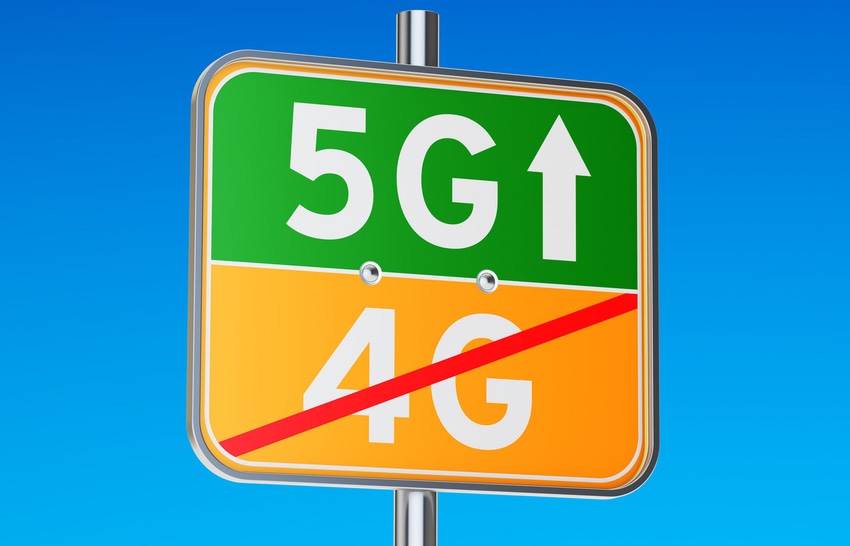There has been much debate in the industry as to what 5G will actually look like, with almost every company having their own definition of 5G. While we know it will be the glue that connects everything to everyone, how do the companies that are helping to make 5G a reality see it?
January 29, 2018

Telecoms.com periodically invites third parties to share their views on the industry’s most pressing issues. In this piece Shrikant Shenwai, CEO of the Wireless Broadband Alliance, takes a big-picture look at the dawn of 5G and how it might play out.
From smartphones and tablets, to connected cars and even smart kettles, the world we are living in is becoming increasingly connected. In fact according to Gartner, by 2020, there will be almost 21 billion connected ‘things’ in use around the world. 5G is promising to be the framework for the connected world, with things, data applications, transport systems and cities seamlessly talking to one another and sharing information to improve our quality of life.
But with 5G only a few years away (and with some operators even citing 5G implementations by 2018), what will a 5G world look like? How will licensed and unlicensed technologies work together to deliver new services? How will Wi-Fi and mobile networks evolve to cope with 5G? And how will the gap in interfaces be addressed to connect different devices and across vertical industries? We’ve asked the more than 65 operators, vendors and hubs from six different continents to share exactly what it is they think will need to happen to kick-start the road to 5G, and found out from industry leaders what they think the 5G world will really look like.
What is 5G?
There has been much debate in the industry as to what 5G will actually look like, with almost every company having their own definition of 5G. While we know it will be the glue that connects everything to everyone, how do the companies that are helping to make 5G a reality see it?
For KT, 5G is about providing massive seamless connectivity for all devices, in hyper-real time speed and with low latency. This will support countless devices hitting the network and trying to gain access at the same time, as well as support various types of traffic – from Kbps to massive 3D content and holograms going through the future network.
For Cisco, “5G is far bigger than radio and transcends mobility to provide networking as a platform… Think of the enormous potential for countries, cities, venues, industries, transportation, people and all of the infinite interplay between things, people and services/applications. If we play it right 5G can live up to the hype and expectations to support and deliver new services that have not yet been invented.”
While the 5G umbrella network encompasses a virtually limitless number of verticals, when will 5G really come in to fruition?
Expectation vs reality
While most of the industry is already looking into 5G related topics, and with many believing 5G will be standardized by 2020, only a third of the industry expects to have deployments in place by this time. Operators are even less optimistic, with two thirds expecting to have 5G deployments in place by 2025.
For 5G to be successful, the industry agrees that convergence of services and technologies, virtualization and regulation of shared spectrum models are critical. For operators, virtualization is an absolute must for 5G to become a reality. Standardization is a major industry gap that needs to be addressed, along with coexistence of technologies and certification.
For Orange, 5G will not only extend and open new opportunities in vertical markets – from factories to utilities, healthcare to automotive, agriculture and cities – it will offer a consistent user experience. However, like any new generation, 5G will require significant investment from operators – and with revenues decreasing, a major challenge the industry faces is having a regulatory environment that encourages investment in connectivity.
Convergence and coexistence
More than half of the industry believes that 5G will be a combination of licensed and unlicensed technologies, with an agreement that unlicensed, in some way, shape or form, will be relevant for 5G. We are predicting that Wi-Fi will be the unlicensed spectrum technology that is a significant driving force for 5G.
For Cisco, “there has never been a better time to start building the next generation 5G ready network. The market knows it, [and] our service provider customers know it as well… 5G will be as strong as its weakest link across domains: HetNet, Cloud-RAN, IP transport, mobile core, edge and orchestration, analytics, and security”.
ZTE believes that unlicensed technologies, coupled with core networks, can increase the access network capacity and benefit users’ wireless experience. Intel is very much in agreement when it comes to the convergence and coexistence of licensed and unlicensed technology – a world where everything is connected, it believes the industry needs all the spectrum it can get.
The perks of unlicensed
The industry believes that the services that are set to be improved by the use of unlicensed technologies as part of 5G are smart cities, IoT sensor networks, safety and surveillance, smart home and healthcare.
Why unlicensed? The main benefits of unlicensed technologies focus on enhanced throughput, and better cost and coverage.
Orange believes that “Network operators will need to access various spectrum resources to deliver ubiquitous services… LAA and LWA are seen as complementing licensed technologies to provide increased capacity for small cells in a variety of locations such as indoor for enterprises and public venues, and outdoor hotspots and events.”
Cisco is of a similar view, and believes that 5G is about leveraging the best access technologies in a seamless manner to stay plugged in the connective tissue of internet, with ‘seamless interoperability’ as 5G’s mantra.
Key 5G takeaways
5G is on the horizon, and the industry believes it will be a combination of licensed and unlicensed technologies. Convergence of services and technologies is currently the industry hot topic, with coexistence enabling the efficiency levels seen in Wi-Fi networks. With smart cities, IoT sensor networks, safety and surveillance being the industry verticals driven by 5G, more needs to be done in terms of spectrum allocation, cost and regulation, in order arrive to make a 5G a reality.
 Shrikant Shenwai is the CEO and one of the founders of Wireless Broadband Alliance (WBA). Under his leadership, the WBA has transformed into a global industry organization with 130+ members, including leading wireless & broadband operators and technology companies who are driving the vision of a frictionless wireless service experience for Citizens, Businesses, Cities and Things. The WBA membership is strategically focussed on enabling services with next generation Wi-Fi and significant adjacent technologies to address business issues and opportunities for service providers, enterprises and cities. To drive the development of connected communities and cities, the WBA has launched specific global initiatives such as World Wi-Fi Day and the Connected City Advisory Board. An Electronics & Communication engineer by training, Shrikant Shenwai has lived and worked in Asia for many years and currently lives in Canada with his family.
Shrikant Shenwai is the CEO and one of the founders of Wireless Broadband Alliance (WBA). Under his leadership, the WBA has transformed into a global industry organization with 130+ members, including leading wireless & broadband operators and technology companies who are driving the vision of a frictionless wireless service experience for Citizens, Businesses, Cities and Things. The WBA membership is strategically focussed on enabling services with next generation Wi-Fi and significant adjacent technologies to address business issues and opportunities for service providers, enterprises and cities. To drive the development of connected communities and cities, the WBA has launched specific global initiatives such as World Wi-Fi Day and the Connected City Advisory Board. An Electronics & Communication engineer by training, Shrikant Shenwai has lived and worked in Asia for many years and currently lives in Canada with his family.
Read more about:
DiscussionAbout the Author(s)
You May Also Like








.png?width=300&auto=webp&quality=80&disable=upscale)


_1.jpg?width=300&auto=webp&quality=80&disable=upscale)


.png?width=800&auto=webp&quality=80&disable=upscale)